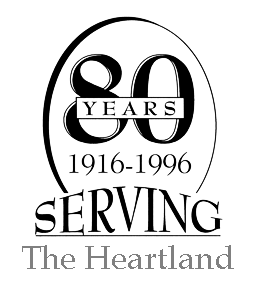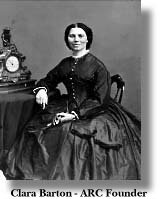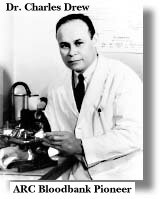 American Red Cross activities in the Omaha area began many years before the organization of a local chapter. Area residents answered appeals by the Red Cross for food, clothing, medical supplies and funds to help victims of major disasters across the nation. The Easter Sunday Tornado of 1913 brought Red Cross disaster relief to Omaha. Trained disaster workers helped organize local relief efforts and many local nurses were recruited to care for the injured. In 1916, just four days after America entered World War I, the local Red Cross began meeting the needs of the military. Hundreds of chapters were created, seemingly, overnight. Among them was the Omaha Chapter. American Red Cross activities in the Omaha area began many years before the organization of a local chapter. Area residents answered appeals by the Red Cross for food, clothing, medical supplies and funds to help victims of major disasters across the nation. The Easter Sunday Tornado of 1913 brought Red Cross disaster relief to Omaha. Trained disaster workers helped organize local relief efforts and many local nurses were recruited to care for the injured. In 1916, just four days after America entered World War I, the local Red Cross began meeting the needs of the military. Hundreds of chapters were created, seemingly, overnight. Among them was the Omaha Chapter.
 On April 1, 1917, the Omaha Chapter was formed with Gould Dietz, a local businessman, as the first chapter chairman. Office space was provided in the Douglas County Courthouse. Red Cross activities during World War I varied. Canteens were established at railroad stations and Fort Omaha. Home Service provided assistance to families of servicemen and women. Other volunteers produced hospital garments, surgical dressings and knitted items to be sent overseas. In cooperation with the University of Nebraska Hospital, fully equipped hospital and ambulance units were created and sent to France. Staffed by local volunteers, both units traveled extensively throughout France. During the war, local citizens contributed generously to aid the chapter in meeting local and national needs. More than $1.25 million was raised between March 5, 1917, and January 31, 1919. On April 1, 1917, the Omaha Chapter was formed with Gould Dietz, a local businessman, as the first chapter chairman. Office space was provided in the Douglas County Courthouse. Red Cross activities during World War I varied. Canteens were established at railroad stations and Fort Omaha. Home Service provided assistance to families of servicemen and women. Other volunteers produced hospital garments, surgical dressings and knitted items to be sent overseas. In cooperation with the University of Nebraska Hospital, fully equipped hospital and ambulance units were created and sent to France. Staffed by local volunteers, both units traveled extensively throughout France. During the war, local citizens contributed generously to aid the chapter in meeting local and national needs. More than $1.25 million was raised between March 5, 1917, and January 31, 1919.
The period between the World Wars did not see a decline in local Red Cross activities. A nursing service was organized January 24, 1919. In cooperation with the Visiting Nurses Association, care was given to victims of the flu epidemic. Clothing drives were also organized for war victims in Europe. Junior Red Cross, which was active during World War I, was dropped in 1922 but reactivated ten years later. First aid classes began in 1934 and the system of four highway first aid stations was created in 1935. In 1935, the chapter name was changed to Douglas County Chapter. A Braille transcription service was begun in 1936. This service would last until taken over by the American Association for the Blind in 1947. "Learn-to-swim" programs were initiated in 1937. The local Community Chest was unable to meet Red Cross needs for funding. By mutual agreement, Red Cross withdrew from the Community Chest in 1939. They were to remain separate until 1955. Roll call for funds was generously supported by local citizens.
Red Cross was forced out of its offices at the courthouse when, in 1919, citizens rioted and set fire to the building. Offices were located in numerous buildings with other services distributed to other locations throughout the city. It was decided in August 1941 to purchase the first Chapter House at 208 South 33rd Street.
During World War II, many services provided in the earlier war were resurrected. The chapter trained 593 women as nurses' aides for the ill and injured at home, so trained nurses could be sent to war. Junior Red Cross gained popularity during World War II. More than 46,000 youth made toys for children in Europe, cared for orphans and held food drives. Thousands of elementary and high school students sponsored holiday dinners, dances and a Safe-Teen program for student drivers. Volunteers visited Fort Omaha Hospital to read books, play music or help patients write letters. they staffed canteens at railway stations to give departing servicemen shaving cream, postcards and other items difficult to obtain overseas. The Chapter worked with the University of Nebraska Medical Center to send a mobile hospital unit to France.
After the war, interest grew in first aid, nursing and swimming classes. Red Cross also began Braille transcription of books for the blind. Needs at home did not cease. In 1943 and 1944, the Chapter Disaster Preparedness Committee provided relief to more than 500 victims of local flooding. First aid stations were established at dangerous highway intersections and Mobile First Aid Units cared for the injured on streets and highways. Nursing Services expanded in the 1950s and 60s to offer Home Nursing classes at public schools.
In the 1970s, Nursing and Health classes grew beyond the basic offerings to include Prenatal Parenting, CPR and Babysitting (Mother's Aide) classes. World War II caused tremendous growth in Red Cross activities. Home Service was expanded to meet the needs of servicemen and their families. Production corps again furnished surgical dressings and garments for shipment overseas. Canteens were maintained at railway stations, the YMCA and the Omaha Municipal Airport. Later, air evacuees were served at Offutt Field. The Nurses Aide Corps helped make up for the shortage of nurses in local hospitals. The Chapter was prepared for disaster. A nationwide Disaster Preparedness Committee worked with the Omaha Fire Department to strategically locate emergency supplies around the city. Major flooding on the Missouri River in April 1943 tested the readiness of the Preparedness Committee.
 With the conclusion of World War II, Red Cross cut back on some programs, but began others. A blood bank was established in October 1947 to serve local hospitals. Located at 2549 Farnam St., the program met with success and was designated one of the first National Centers on January 1, 1948. Nutrition Services provided nutrition education. Home nursing classes provided health education to hundreds of homemakers. Special swimming programs enabled children afflicted with polio to have fun while strengthening weakened muscles. The chapter also trained volunteer workers to work with polio victims in their homes. Home Service was active during the Korean Conflict, providing financial assistance to servicemen and aiding in emergency communications between servicemen and their families. Flooding on the Missouri River again in 1952 challenged prepared volunteers. More than $1.5 million was expended in this area during the relief effort. With the conclusion of World War II, Red Cross cut back on some programs, but began others. A blood bank was established in October 1947 to serve local hospitals. Located at 2549 Farnam St., the program met with success and was designated one of the first National Centers on January 1, 1948. Nutrition Services provided nutrition education. Home nursing classes provided health education to hundreds of homemakers. Special swimming programs enabled children afflicted with polio to have fun while strengthening weakened muscles. The chapter also trained volunteer workers to work with polio victims in their homes. Home Service was active during the Korean Conflict, providing financial assistance to servicemen and aiding in emergency communications between servicemen and their families. Flooding on the Missouri River again in 1952 challenged prepared volunteers. More than $1.5 million was expended in this area during the relief effort.
Due to expansion of Mutual of Omaha and the need for more space at one location by the chapter, a new Chapter House was purchased at 432 South 39th St. in February 1956. The reuniting of Red Cross with the Community Chest yielded increased fund-raising effort. Money was raised to build an addition to the Chapter House, in which an expanded blood center would be located. On July 1, 1961, the Douglas County Chapter and Sarpy County Chapter merged to form The Douglas/Sarpy County Chapter. Blood Services continued to expand so that after 25 years, 81 chapters in Nebraska, Iowa and Kansas (with 108 hospitals) were fully participating. Home Service, later called "Service to Military Families," expanded again to meet the needs of servicemen during the Vietnam war. Local disaster needs were met by prepared volunteers and staff. Blizzards, flooding, fires and tornadoes affected hundreds of persons. Thousands of dollars in aid was distributed. A major tornado in Omaha on May 6, 1975, cost the Chapter $349,950. Expanding programs and services, once again, created the need for larger facilities. A new chapter house and blood center was constructed at 3838 Dewey Ave. and opened October 15, 1979.
The "Heartland Chapter" was created when the Cass County Chapter and the Douglas/Sarpy County Chapter merged on July 1, 1981. Services continued to increase. Red Cross was a major participant in the first Health Fair of the Midlands, April 1983. It is an effort to provide health screening and health education to persons living in Omaha and southwest Iowa. Today, many services offered at the chapter's inception continue. Thousands of military members and their families received Red Cross assistance during Operation Desert Storm. Local volunteers respond to more than 200 house and apartment fires each year. Courses in child care and lifesaving are popular choices for persons selecting careers in those fields.
Due to a nationwide transformation of blood services, in 1993, Chapter Services, which includes Community Health and Safety and Emergency Services, separated operations from Midwest Region Blood Services. Two separate boards of directors were formed and a Chapter Executive Director, Sam Tidwell, was hired to manage the activities of the Chapter.
The Red Cross, as always, remains committed to meeting critical needs of the community. In 1996, CARES, a home caregivers education program designed help the growing number of people taking care of elderly and seriously ill friends or family members living at home.
On December 6, 1996, a new facility, donated by the Heartland community to house the Chapter's operations, was dedicated. A fully suscribed capital campaign, chaired by Dick Davidson of Union Pacific Railroad, raised the needed $2.7 million from individual, business and foundation contributors.

The new Red Cross building is 30,750 square feet and meets the growing need for more classroom space - for both traditional programs such as first aid and CPR - and for new programs like the Red Cross CARES program, a program designed to teach people how to care for seriously ill or elderly people at home. Other community non-profit groups may be able to use the facilities meeting space when Red Cross programs are not scheduled.
A Disaster Operations Center (DOC) and disaster equipment storage are housed in the new building. The DOC improves service and cuts response time of the Chapter's Disaster Action Team (DAT) volunteers. The DAT volunteers are on-call 24-hours-a-day, 365-days-a-year responding to home fires and other emergencies.
The new Red Cross building allows much greater efficiency. Paid and volunteers staff are consolidated in one facility for the first time in more than 10 years.
Heartland Chapter operating costs will be reduced considerably by eliminating lease payments. The savings can be used on direct services to people in our community.
General Contractor for the building was Lueder Construction Company. The architect was HGM Associates Inc.
To date, the following is a partial listing of awards and recognition presented to the Heartland Chapter:
- 1942-43: War Organization of the British Red Cross Society and Order of St. John
- 1946: Women's Voluntary Services War Distressed People of Great Britain and Northern Ireland
- 1954: City of Omaha and the Omaha Chamber of Commerce Certificate of Appreciation
- 1963 to Date:
Nebraska Public Health Association Distinguished Service Award
National Safety Council Youth Certificate of Commendation
City Council of the City of Omaha Resolution
United Way of the Midlands Award of Excellence (5 times)
Commission on Continuing Education Association, Society of Clinical Pathologists
United Way of the Midlands Certificate of Appreciation
Volunteer Bureau Certificate of Appreciation
United Way of the Midlands Gold Award
Nebraska State Recycling Association Achievement Award
|